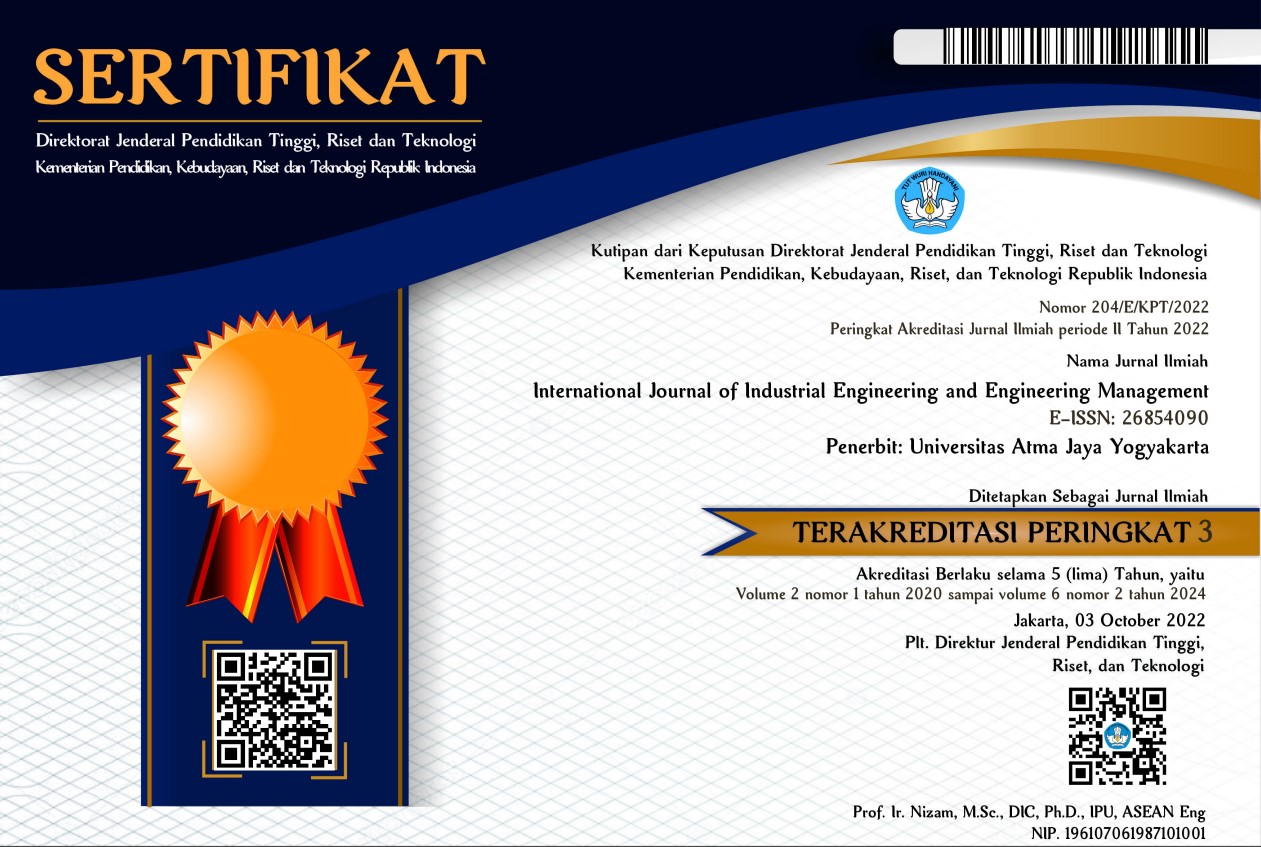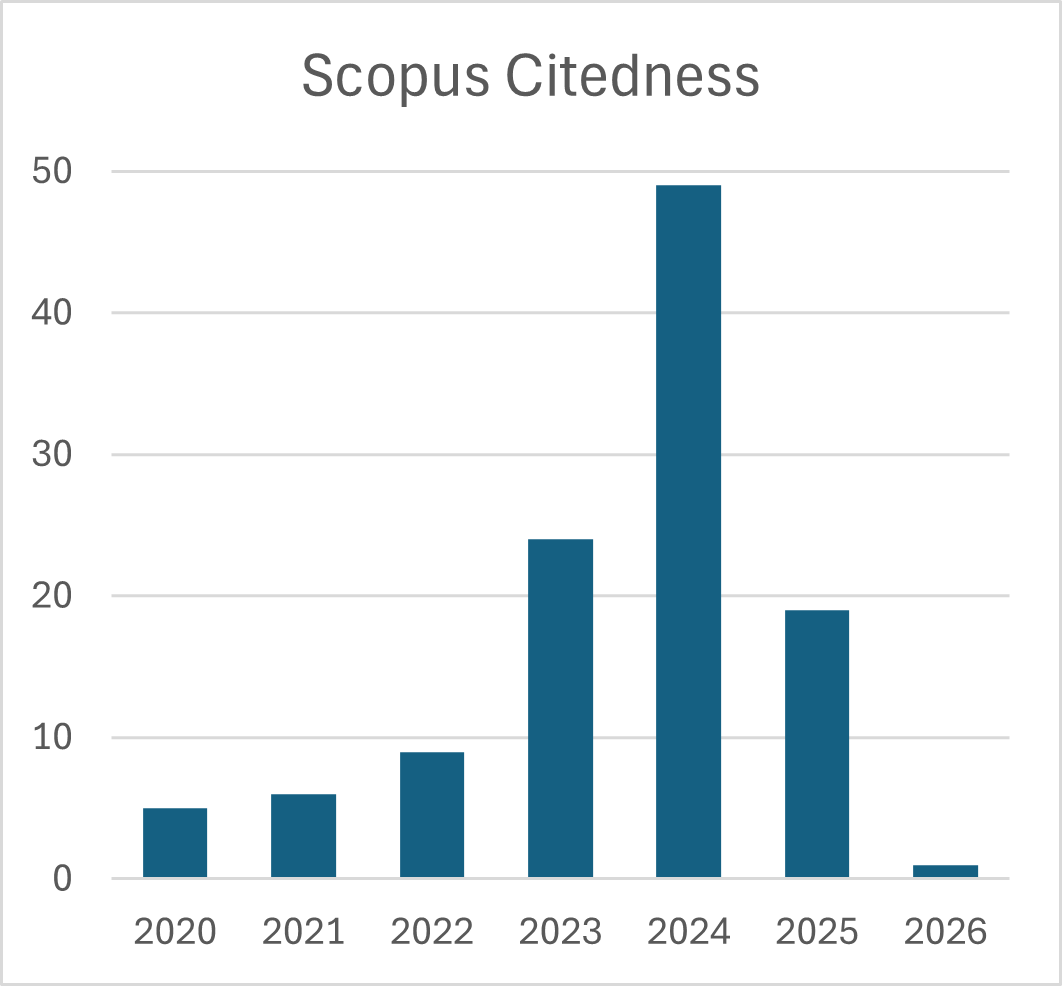Inventory Policy for Dependent Demand Where Parent Demand Has Decreasing Pattern
DOI:
https://doi.org/10.24002/ijieem.v1i1.2293Keywords:
Inventory policy, dependent demand, decreasing demand, product life cycle.Abstract
When a product reaches its maturity in its life cycle, some innovations have to be put in that product in order to lengthen its life cycle. Otherwise, that product will be perceived as obsolete. It might affect the demand of that product i.e. the demand become decreasing. Based on the observation that we conducted over two smart phone brands, the phenomena that the demand has declining pattern really happened in the real situation. In addition, the observation shows that the product life cycle is getting shorter. This implies that the manufacturer has to deal with decreasing demand more often. A case study is presented in this paper, in which manufacturer experienced final product with decreasing demand pattern. Some lot sizing techniques, such as Lot for Lot, Silver Meal 1, Silver Meal 2, Least Unit Cost, Part Period Balancing, and Incremental, are tested to solve the inventory policy for both final product (parent) and its components (child). It is concluded that a company should not consider only one component or one level whenever deciding the inventory policy, i.e. production lot size. It is shown by the case study that the best lot sizing technique for a particular parent of product whenever the company only consider the parent is different with the best lot sizing technique whenever the company consider the parent and its child. For the case presented, it is shown that the smallest total cost of parent and child is most likely occurred whenever Silver Meal 2 lot sizing technique is applied in the parent with decreasing demand pattern.
References
Amrani, M., & Rand, G. K. (1990). An eclectic algorithm for inventory replenishment for items with increasing linear trend in demand. Engineering Cost and Production Economics, 19 (1-3), 261-266.
Barbosa, L. C., & Friedman, M. (1978). Deterministic inventory lot size models—a general root law. Management Science, 24(8), 819-826.
Bayus, B. L. (1994). Are product life cycles really getting shorter?. Journal of Product Innovation Management, 11(4), 300-308.
Bayus, B. L. (1998). An analysis of product lifetimes in a technologically dynamic industry. Management Science, 44(6), 763-775.
Benkherouf, L., & Mahmoud, M. G. (1996). On an inventory model for deteriorating items with increasing time-varying demand and shortages. Journal of the Operational Research Society, 47(1), 188-200.
Cox, W. E. (1967). Product life cycles as marketing models. The Journal of Business, 40(4), 375-384.
Dave, U. (1989a). On a heuristic inventory-replenishment rule for items with a linearly increasing demand incorporating shortages. Journal of the Operational Research Society, 40(9), 827-830
Dave, U. (1989b). A deterministic lot-size inventory model with shortages and a linear trend in demand. Naval Research Logistics, 36(4), 507-514
Deb, M., & Chaudhuri, K. (1987). A note on the heuristic for replenishment of trended inventories considering shortages. Journal of the Operational Research Society, 38(5), 459-463
Diponegoro, A., & Sarker, B. R. (2002). Determining manufacturing batch sizes for a lumpy delivery system with trend demand. International Journal of Production Economics, 77(2), 131-143.
Donaldson, W. A. (1977). Inventory replenishment policy for a linear trend in demand—an analytical solution. Journal of the Operational Research Society, 28(3), 663-670.
Friedman, M. F. (1981). Power-form demand and cost functions in inventory lot size models. Computers & Operations Research, 8(3), 159-167.
Golder, P. N., & Tellis, G. J. (2004). Growing, growing, gone: Cascades, diffusion, and turning points in the product life cycle. Marketing Science, 23(2), 207-218.
Goyal, S. K., & Giri, B. C. (2000). Note on "An optimal recursive method for various inventory replenishment models with increasing demand and shortages" by Teng et al. Naval Research Logistics, 47 (7), 602-606
Goyal, S. K., & Giri, B. C. (2003). A simple rule for determining replenishment intervals of an inventory item with linear decreasing demand rate. International journal of production economics, 83(2), 139-142.
Goyal, S. K., Hariga, M. A., & Alyan, A. (1996). The trended inventory lot sizing problem with shortages under a new replenishment policy. Journal of the Operational Research Society, 47(10), 1286-1295
Goyal, S., Kusy, M., & Soni, R. (1986). A note on the economic replenishment interval for an item with a linear trend in demand. Engineering Costs and Production Economics, 10(3), 253-255.
Hariga, M. (1993). The inventory replenishment problem with a linear trend in demand. Computers & Industrial Engineering, 24(2), 143-150.
Hariga, M. (1994). The inventory lot-sizing problem with continuous time-varying demand and shortages. Journal of the Operational Research Society, 45(7), 827-837.
Hariga, M. A., & Goyal, S. K. (1995). An alternative procedure for determining the optimal policy for an inventory item having linear trend in demand. Journal of the Operational Research Society, 46(4), 521-527
Henery, R. J. (1979). Inventory replenishment policy for increasing demand. Journal of the Operational Research Society, 30(7), 611-617.
Hill, R. M., Omar, M., & Smith, D. K. (1999). Stock replenishment policies for a stochastic exponentially-declining demand process. European Journal of Operational Research, 116(2), 374-388.
Kicks, P., & Donaldson, W. A. (1980). Irregular demand: assessing a rough and ready lot size formula. Journal of the Operational Research Society, 31(8), 725-732.
Kurawarwala, A. A., & Matsuo, H. (1996). Forecasting and inventory management of short life-cycle products. Operations Research, 44(1), 131-150.
Lo, W. Y., Tsai, C. H., & Li, R. K. (2002). Exact solution of inventory replenishment policy for a linear trend in demand–two-equation model. International Journal of Production Economics, 76(2), 111-120.
Mitra, A., Cox, J. F., & Jesse Jr, R. R. (1984).A note on determining order quantities with a linear trend in demand. Journal of the Operational Research Society, 35(2), 141-144
Montgomery, D. C., Bazaraa, M. S., & Keswani, A. K. (1973). Inventory models with a mixture of backorders and lost sales. Naval Research Logistics Quarterly, 20(2), 255-263
Murdeshwar, T. M. (1988). Inventory replenishment policy for linearly increasing demand considering shortages-an optimal solution. Journal of the Operational Research Society, 39(7), 687-692
Phelps, R. I. (1980). Optimal inventory rule for a linear trend in demand with a constant replenishment period. Journal of the Operational Research Society, 31(5), 439-442
Pujawan, I. N., & Kingsman, B. G. (2003). Properties of lot-sizing rules under lumpy demand. International Journal of Production Economics, 81, 295-307.
Resh, M., Friedman, M., & Barbosa, L. C. (1976). On a general solution of the deterministic lot size problem with time-proportional demand. Operations Research, 24(4), 718-725.
Ritchie, E. (1980). Practical inventory replenishment policies for a linear trend in demand followed by a period of steady demand. Journal of the Operational Research Society, 31(7), 605-613
Ritchie, E. (1984). The E.O.Q. for linear increasing demand: A simple optimal solution. Journal of the Operational Research Society, 35(10), 949-952.
San José, L. A., Sicilia, J., & García-Laguna, J. (2005). An inventory system with partial backlogging modeled according to a linear function. Asia-Pacific Journal of Operational Research, 22 (2), 189-209
San José, L. A., Sicilia, J., & García-Laguna, J. (2006). Analysis of an inventory system with exponential partial backordering. International Journal of Production Economics, 100(1), 76-86
Silver, E. A. (1979). Simple inventory replenishment decision rule for a linear trend in demand. Journal of the Operational Research Society, 30(1), 71-75
Teng, J. T. (1996). A deterministic inventory replenishment model with a linear trend in demand. Operations Research Letters, 19(1), 33-41.
Teng, J.T. (1994). A note on inventory replenishment policy for increasing demand. Journal of the Operational Research Society, 45(11), 1335-1337
Teng, J-T., Chern, M. S., & Yang, H. L. (1997). An optimal recursive method for various inventory replenishment models with increasing demand and shortages. Naval Research Logistics, 44(8), 791-806
Wang, S. P. (2002). On inventory replenishment with non-linear increasing demand. Computers & Operations Research, 29(13), 1819-1825.
Wee, H. M. (1995). A deterministic lot-size inventory model for deteriorating items with shortages and a declining market. Computers & Operations Research, 22(3), 345-356.
Yang, H. L. (2006). A backward recursive algorithm for inventory lot-size models with power-form demand and shortages. International journal of systems science, 37(4), 235-242.
Yang, J., Zhao, G. Q., & Rand, G. K. (1999). Comparison of several heuristics using an analytic procedure for replenishment with non-linear increasing demand. International Journal of Production Economics, 58(1), 49-55.
Yang, J., Zhao, G. Q., & Rand, G. K. (2004). An eclectic approach for replenishment with non-linear decreasing demand. International Journal of Production Economics, 92(2), 125-131.
Zhao, G. Q., Yang, J., & Rand, G. K. (2001). Heuristics for replenishment with linear decreasing demand. International Journal of Production Economics, 69(3), 339-345.
Zhou, Y. W., Lau, H. S., & Yang, S. L. (2004). A finite horizon lot-sizing problem with time-varying deterministic demand and waiting-time-dependent partial backlogging. International Journal of Production Economics, 91(2), 109-119








